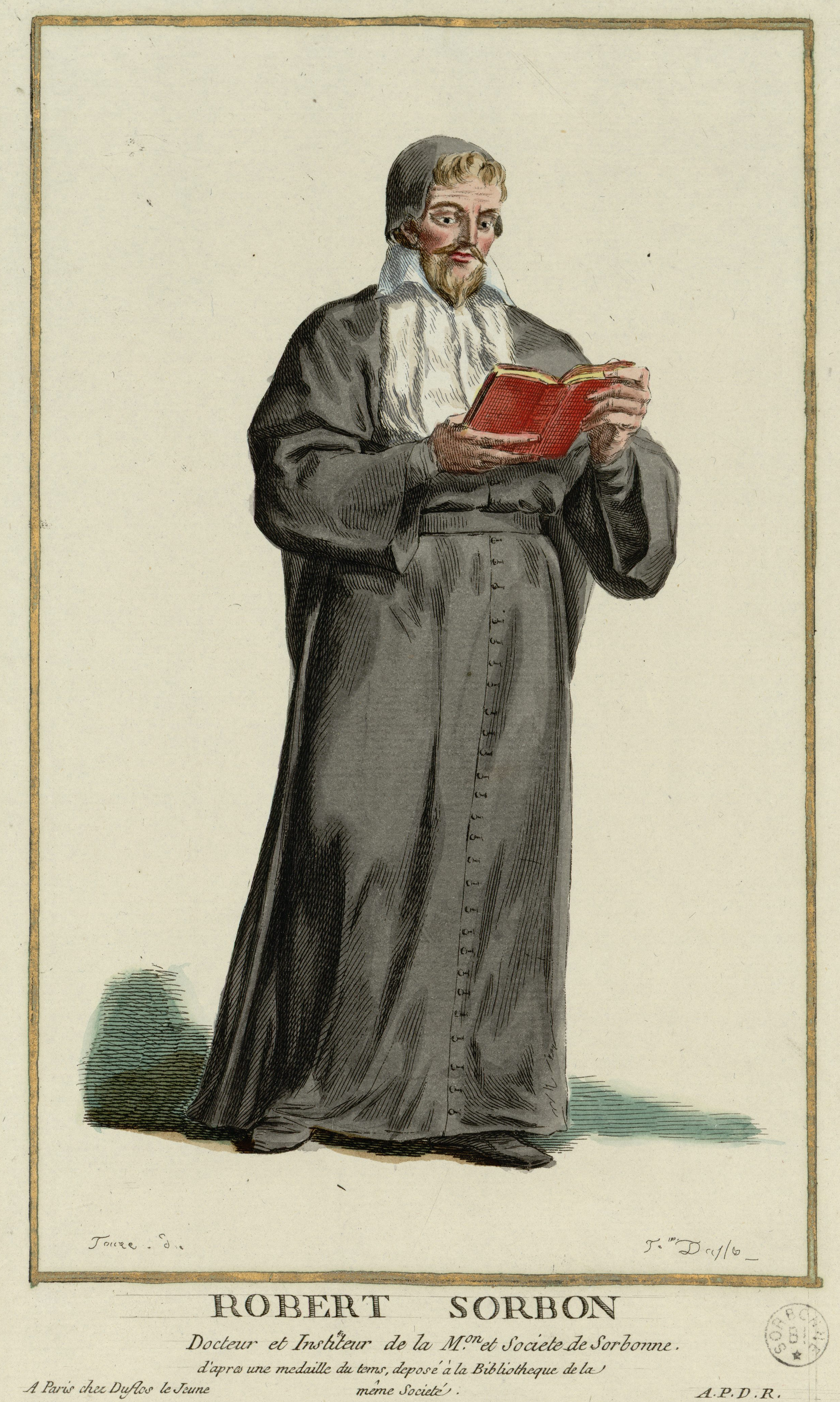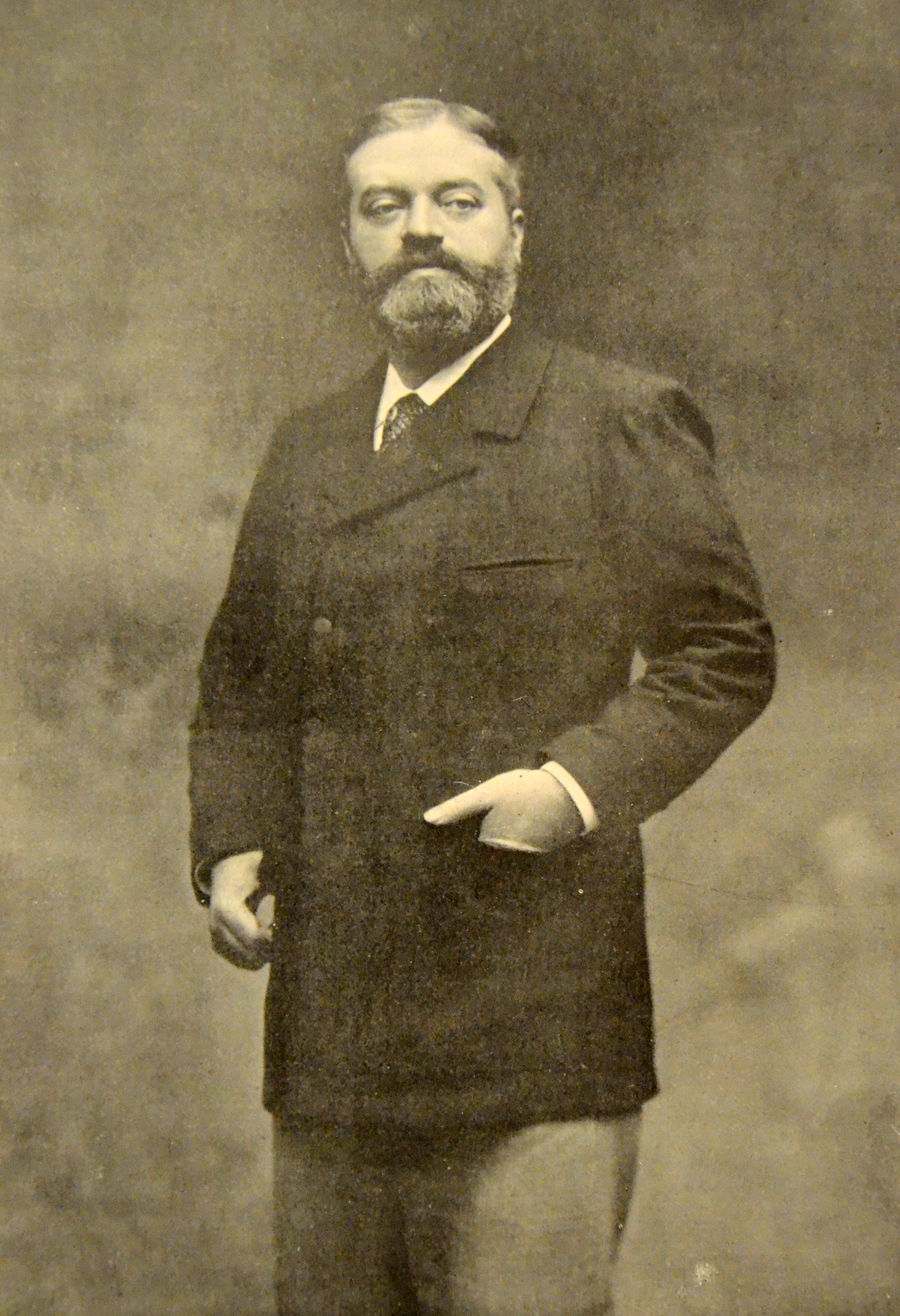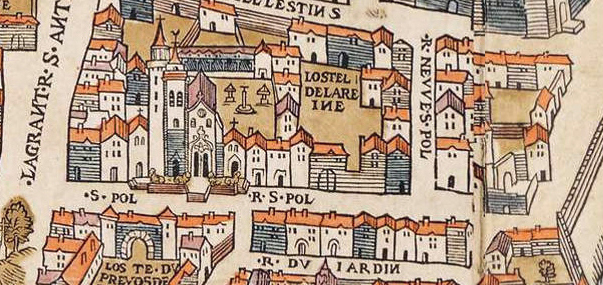|
Sorbonne Library
The Sorbonne Library (French: ''Bibliothèque interuniversitaire de la Sorbonne'') is an inter-university library part of the network of 36 libraries of the Panthéon-Sorbonne University, in Paris, France. It is located at 47, rue des Écoles in the Latin Quarter in the 5th arrondissement. The library of the , located at 191 rue Saint-Jacques, is attached. The Sorbonne Library is situated in the Sorbonne building. It is a medieval institution of the Sorbonne, which evolved over the centuries as part of the University of Paris. It is a common library of Panthéon-Sorbonne University and Sorbonne-Nouvelle University. It is administered by Panthéon-Sorbonne University as per a governing agreement signed among these universities in 2020. History ;Library of the Ancient College de Sorbonne, (1289–1795) The college of theology, Maison de Sorbonne, was established at the Collège de Sorbonne in 1257 by Robert de Sorbon. Its library, the Library of the Collège de Sorbon ... [...More Info...] [...Related Items...] OR: [Wikipedia] [Google] [Baidu] |
Latin Quarter
The Latin Quarter of Paris (french: Quartier latin, ) is an area in the 5th and the 6th arrondissements of Paris. It is situated on the left bank of the Seine, around the Sorbonne. Known for its student life, lively atmosphere, and bistros, the Latin Quarter is the home to a number of higher education establishments besides the university itself, such as : * Paris City University (with the Faculté de Médecine de Paris) ; * Sorbonne University (with Sorbonne and Jussieu university campus) * PSL University (with the École Normale Supérieure - PSL and the École des Mines de Paris - PSL campuses) ; * the lycée Henri-IV, the lycée Louis-le-Grand and the lycée Saint-Louis, known as les trois lycées de la montagne * Panthéon-Assas University ; * Panthéon-Sorbonne University (with the École de droit de la Sorbonne) ; * the Collège de France ; * and the Schola Cantorum. Other establishments such as the École Polytechnique have relocated in recent times to mor ... [...More Info...] [...Related Items...] OR: [Wikipedia] [Google] [Baidu] |
Lycée Louis-le-Grand
The Lycée Louis-le-Grand (), also referred to simply as Louis-le-Grand or by its acronym LLG, is a public Lycée (French secondary school, also known as sixth form college) located on rue Saint-Jacques in central Paris. It was founded in the early 1560s by the Jesuits as the ''Collège de Clermont'', was renamed in 1682 after King Louis XIV ("Louis the Great"), and has remained at the apex of France's secondary education system despite its disruption in 1762 following the suppression of the Society of Jesus. It offers both a high school curriculum, and a Classes Préparatoires post-secondary-level curriculum in the sciences, business and humanities. The strict admission process is based on academic grades, drawing from middle schools (for entry into high school) and high schools (for entry into the preparatory classes) throughout France. Its educational standards are highly rated and the working conditions are considered optimal due to its demanding recruitment of teachers. L ... [...More Info...] [...Related Items...] OR: [Wikipedia] [Google] [Baidu] |
Bibliothèque Sainte-Geneviève
A library is a collection of materials, books or media that are accessible for use and not just for display purposes. A library provides physical (hard copies) or digital access (soft copies) materials, and may be a physical location or a virtual space, or both. A library's collection can include printed materials and other physical resources in many formats such as DVD, CD and cassette as well as access to information, music or other content held on bibliographic databases. A library, which may vary widely in size, may be organized for use and maintained by a public body such as a government; an institution such as a school or museum; a corporation; or a private individual. In addition to providing materials, libraries also provide the services of librarians who are trained and experts at finding, selecting, circulating and organizing information and at interpreting information needs, navigating and analyzing very large amounts of information with a variety of resources. Li ... [...More Info...] [...Related Items...] OR: [Wikipedia] [Google] [Baidu] |
Jussieu Campus
The Jussieu Campus (''Campus Universitaire de Jussieu'') is a higher education campus located in the 5th arrondissement of Paris, France. It is the main campus of the Faculty of Science of Sorbonne University. Paris-VII University (now merged into University of Paris), was also originally located on the Jussieu campus, but moved to a new, independent campus, , in the new Paris Rive Gauche neighbourhood in 2006-2012. History The campus was opened in 1951 and eventually it would host a great part of the old faculty of sciences of the Sorbonne. The campus is built on the site of the former "Halle aux Vins," a wine market created by Napoleon Bonaparte. In 1957, the first university buildings were built along the Eastern bank of the River Seine (le quai Saint-Bernard), and Rue Cuvier. In order to allow the wine market to remain on the site, the architects planned to construct the buildings on stilts above the roads of the market. However, in 1964, with over 20,000 science stude ... [...More Info...] [...Related Items...] OR: [Wikipedia] [Google] [Baidu] |
Henri Paul Nénot
Henri Paul Nénot (27 May 1853 – 1934) was a noted French architect. Biography Nénot was born in Paris. After his initial training in an architectural workshop, he entered the studio of Charles-Auguste Questel at the École Nationale Supérieure des Beaux-Arts while also working for various architects, including Charles Garnier. He was in residence at the Villa Medici 1878–1881. In 1882 Nénot began his career, during which he was appointed architect of the Sorbonne, which remains his great work, as well as designing other university buildings in Paris and a number of private residential and commercial buildings. In 1895 he was elected department chair for architecture in the Académie des beaux-arts. His last position was Director General for the architecture of the Palace of Nations in Geneva, where he died in an accident. Principal works * 1875: école normale d'Huy in Belgium, with sculptor Eugène André Oudiné * 1882–1901: new Sorbonne, 5th arrondissement * ... [...More Info...] [...Related Items...] OR: [Wikipedia] [Google] [Baidu] |
Leon Renier
Leon, Léon (French) or León (Spanish) may refer to: Places Europe * León, Spain, capital city of the Province of León * Province of León, Spain * Kingdom of León, an independent state in the Iberian Peninsula from 910 to 1230 and again from 1296 to 1301 * León (historical region), composed of the Spanish provinces León, Salamanca, and Zamora * Viscounty of Léon, a feudal state in France during the 11th to 13th centuries * Saint-Pol-de-Léon, a commune in Brittany, France * Léon, Landes, a commune in Aquitaine, France * Isla de León, a Spanish island * Leon (Souda Bay), an islet in Souda Bay, Chania, on the island of Crete North America * León, Guanajuato, Mexico, a large city * Leon, California, United States, a ghost town * Leon, Iowa, United States * Leon, Kansas, United States * Leon, New York, United States * Leon, Oklahoma, United States * Leon, Virginia, United States * Leon, West Virginia, United States * Leon, Wisconsin (other), United States, severa ... [...More Info...] [...Related Items...] OR: [Wikipedia] [Google] [Baidu] |
Philippe Le Bas
Philippe Le Bas (18 June 1794 in Paris – 19 May 1860 in Paris) was a French hellenist, archaeologist and translator. He was the son of Philippe Le Bas and Elisabeth Duplay, the daughter of Robespierre's landlord Maurice Duplay. He was only 6 weeks old when his father committed suicide on Robespierre's fall on 27 July 1794 in the Thermidorian Reaction The Thermidorian Reaction (french: Réaction thermidorienne or ''Convention thermidorienne'', "Thermidorian Convention") is the common term, in the historiography of the French Revolution, for the period between the ousting of Maximilien Robespie .... {{DEFAULTSORT:Le Bas, Philippe Writers from Paris 1794 births 1860 deaths French classical scholars French archaeologists German–French translators French librarians Academic staff of the École Normale Supérieure Members of the Académie des Inscriptions et Belles-Lettres French hellenists French epigraphers 19th-century French translators 19th-century French male ... [...More Info...] [...Related Items...] OR: [Wikipedia] [Google] [Baidu] |
House Of Montmorency
The House of Montmorency, pronounced , was one of the oldest and most distinguished noble families in France. Origins The family name Montmorency derived from their castle in the ''pays de France'', recorded in Latin as ''Mons Maurentiacus'', in 993. ''Maurentiacus'', the name of the area surrounding the castle, meant "estate of Maurentius", probably a Gallo-Roman landowner. The village which grew up in the vicinity of the castle was also known as ''Montmorency'', and is eponymous of the modern commune of Montmorency, Val-d'Oise ''département'', in the immediate neighborhood of Enghien-les-Bains and Saint-Denis, about northwest of Paris. History The family, since its first appearance in history in the person of Bouchard I of Montmorency in the 10th century, has furnished six constables and twelve marshals of France, several admirals and cardinals, numerous grand officers of the Crown and grand masters of various knightly orders. Henry IV of France once said, that if ever t ... [...More Info...] [...Related Items...] OR: [Wikipedia] [Google] [Baidu] |
House Of Rougé
The de Rougé family whose former name was des Rues is a family of the French nobility from Anjou and dating back to the 14th century.Henri Jougla de Morenas, ''Grand Armorial de France'', tome VI page 74. Some historians believe that the exiting Rougé family from Anjou comes from a Rougé family known since 1045, ruling over the lordship of Rougé in Brittany, but the link between the ''des Rues family'' and the former ''de Rougé family'' is not proven. Several members of this family have distinguished themselves as soldiers, churchmen, diplomats, and academics. Origins The existing ''des Rues family'' used the name ''de Rougé'' at the beginning of the 16th century after that the older family of the same name ''de Rougé'' (known since 1045 became extinct. The proven filiation of the existing de Rougé family is established with Huet des Rues, married in 1375 with Jeanne d'Erbrée or with Jean II des Rues, married in 1421 with Jeanne d’Orvaux. Some historians believe ... [...More Info...] [...Related Items...] OR: [Wikipedia] [Google] [Baidu] |
Princes Of Condé
The Most Serene House of Bourbon-Condé (), named after Condé-en-Brie now in the Aisne ', was a French princely house and a cadet branch of the House of Bourbon. The name of the house was derived from the title of Prince of Condé (French: ''prince de Condé'') that was originally assumed around 1557 by the French Protestant leader, Louis I de Bourbon, prince de Condé, Louis de Bourbon (1530–1569), uncle of King Henry IV of France, and borne by his male-line descendants. This line became extinct in 1830 when his eighth-generation descendant, Louis Henry II, Prince of Condé, Louis Henri Joseph de Bourbon, died without surviving male issue. The princely title was held for one last time by Louis d'Orléans, Prince of Condé, who died in 1866. History The Princes of Condé descend from the List of counts and dukes of Vendôme, Vendôme family – the progenitors of the modern House of Bourbon. There was never a principality, sovereign or vassal, of Condé. The name merely ser ... [...More Info...] [...Related Items...] OR: [Wikipedia] [Google] [Baidu] |
Bibliothèque Nationale De France
The Bibliothèque nationale de France (, 'National Library of France'; BnF) is the national library of France, located in Paris on two main sites known respectively as ''Richelieu'' and ''François-Mitterrand''. It is the national repository of all that is published in France. Some of its extensive collections, including books and manuscripts but also precious objects and artworks, are on display at the BnF Museum (formerly known as the ) on the Richelieu site. The National Library of France is a public establishment under the supervision of the Ministry of Culture. Its mission is to constitute collections, especially the copies of works published in France that must, by law, be deposited there, conserve them, and make them available to the public. It produces a reference catalogue, cooperates with other national and international establishments, and participates in research programs. History The National Library of France traces its origin to the royal library founded at t ... [...More Info...] [...Related Items...] OR: [Wikipedia] [Google] [Baidu] |
Saint-Paul-Saint-Louis
The Église Saint-Paul-Saint-Louis is a church on rue Saint-Antoine in the Marais quarter of Paris. The present building was constructed from 1627 to 1641 by the Jesuit architects Étienne Martellange and François Derand, on the orders of Louis XIII of France. It was the first church in Paris to break away entirely from the Gothic style and to use the new Baroque style of the Jesuits, and it had an important influence on Parisian religious architecture. It gives its name to Place Saint-Paul and its nearest Metro station, Saint-Paul. Next door to the church is the Lycée Charlemagne, also founded by the Jesuits. History First church The first church on the site, Saint-Paul-des-Champs, was dedicated around 1125, when the neighbourhood first became a parish. It was dedicated to Paul the Hermit, a Christian monk in Egypt in the 3rd-4th century. Behind it was a cemetery, originally connected to the monastery of Saint-Éloi, founded by monks of saint Eloi of Noyon and Dagobert I. ... [...More Info...] [...Related Items...] OR: [Wikipedia] [Google] [Baidu] |







